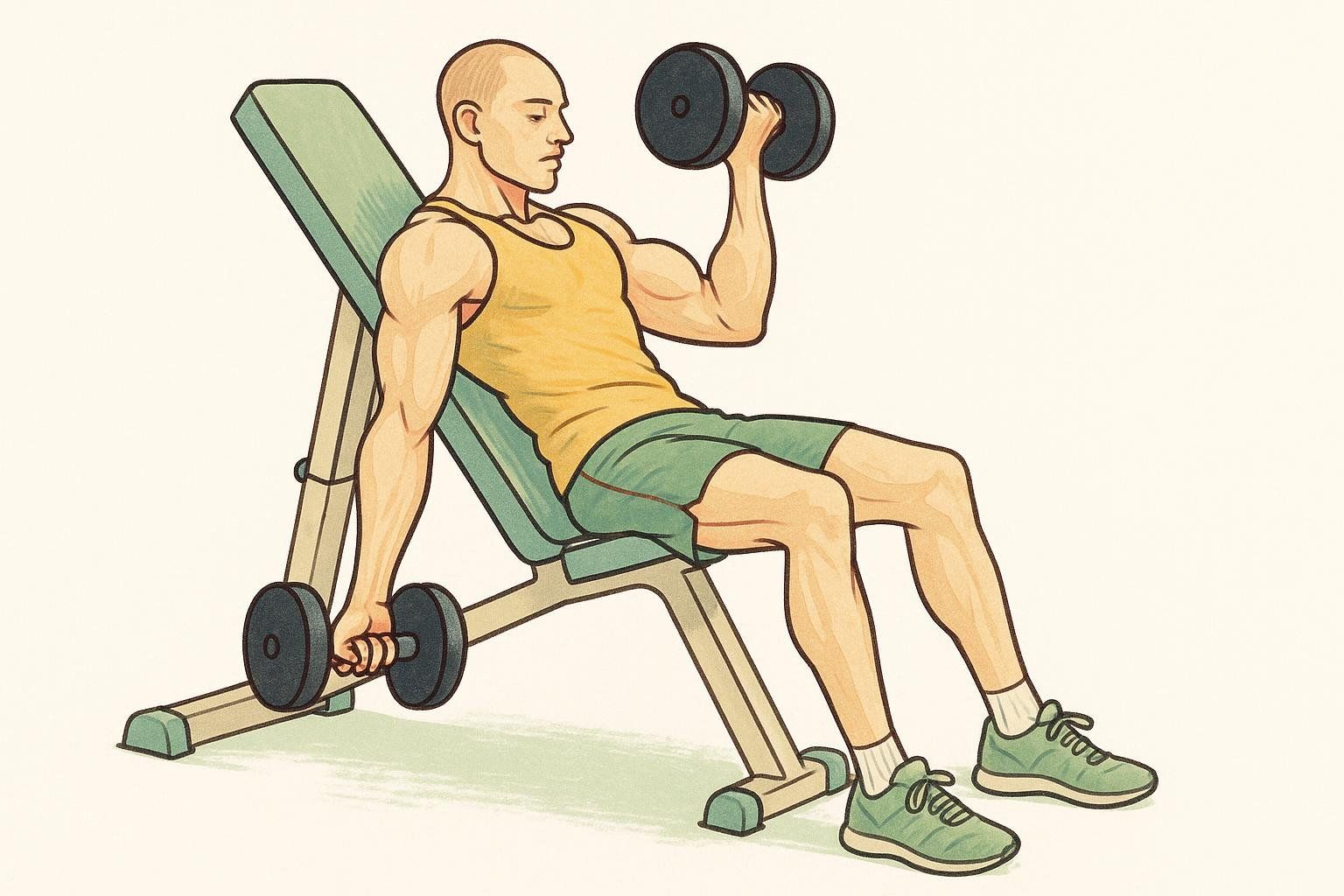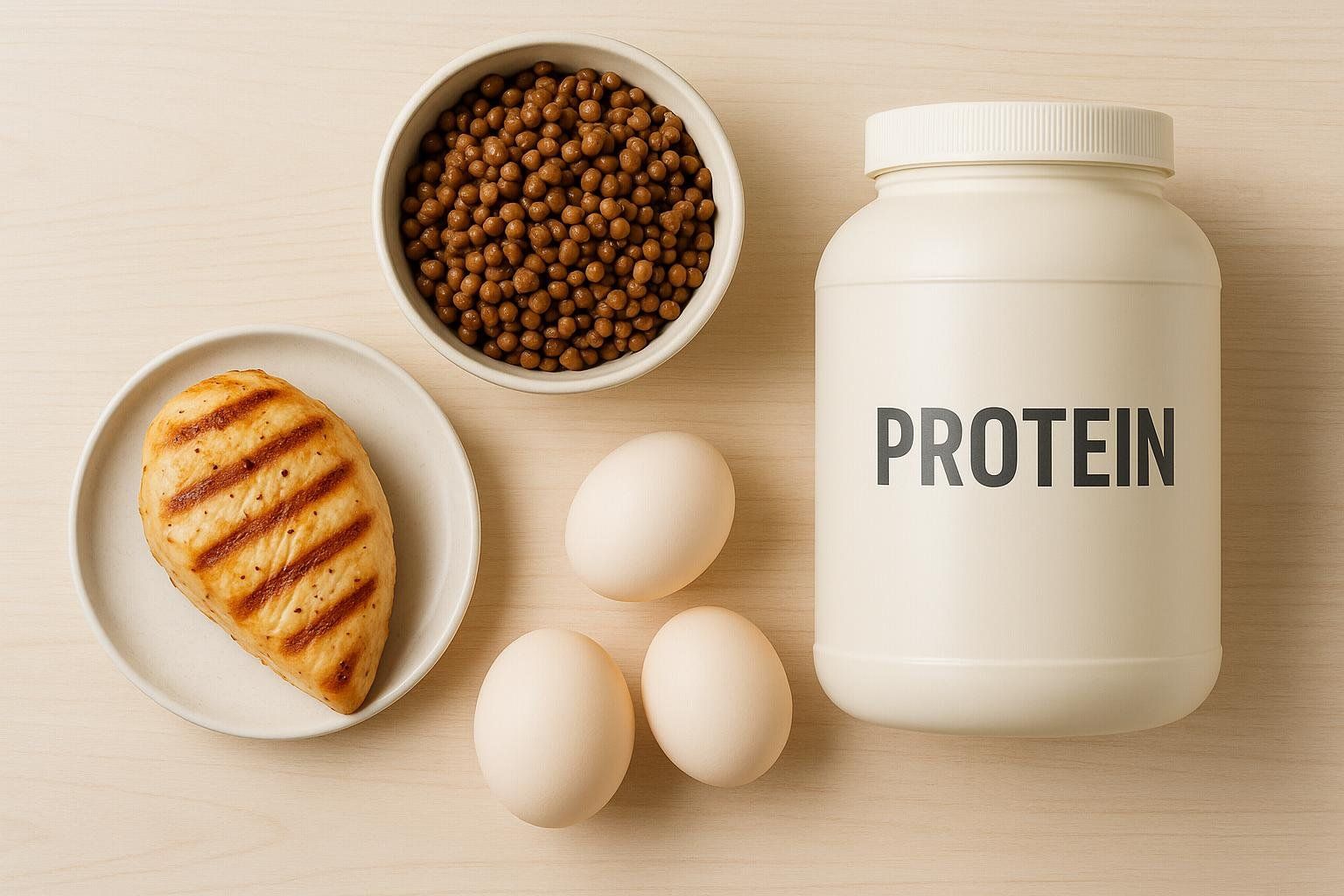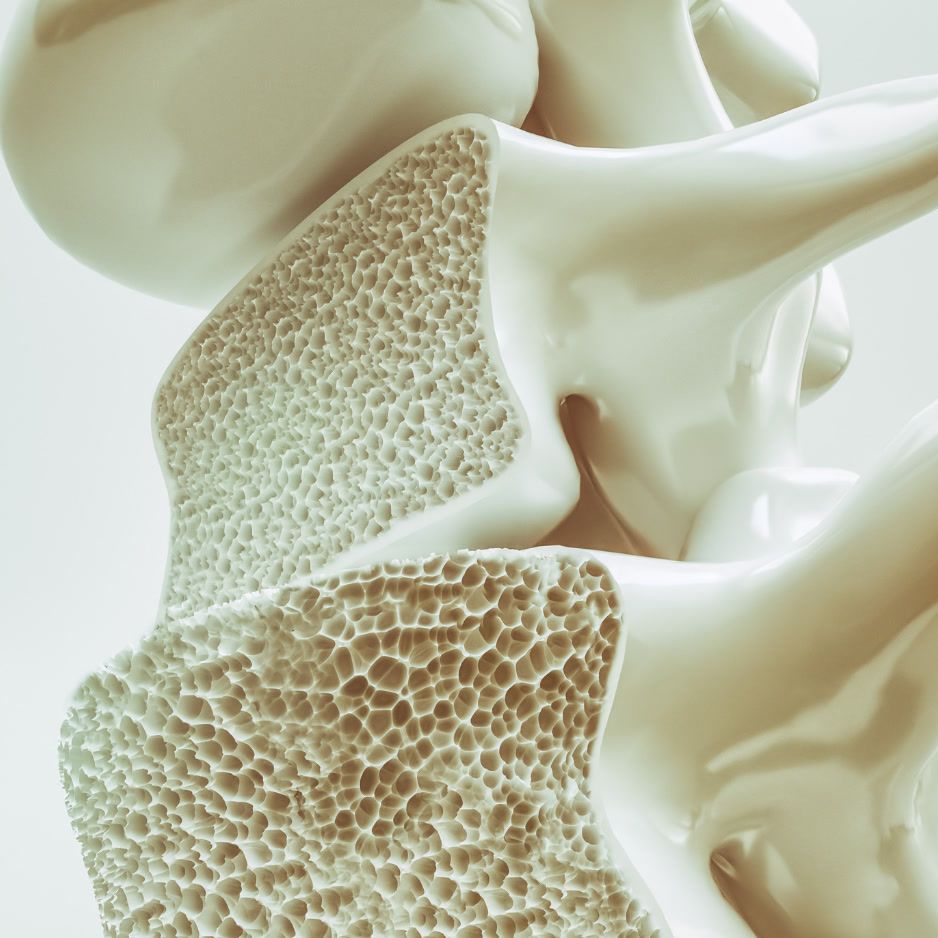How to Build Bigger Biceps: Exercises, Nutrition, and Recovery

How to Build Bigger Biceps: Exercises, Nutrition, and Recovery for Every Level
If your goal is to build noticeably bigger biceps—whether you’re curling your first dumbbell or refining a mature peak—this guide delivers science-backed strategies to grow impressive arms without wasting gym time.

Meet Your Biceps (and Why They Matter)
The biceps brachii actually has two heads—a long head and a short head. Together they flex your elbow and rotate (supinate) your forearm.
Beneath them lies the brachialis, a separate muscle that can add considerable width to your upper arm when strengthened.
Why does this matter? Strong, well-developed biceps do more than fill out a T-shirt:
- Assist in everyday pulling tasks (think hoisting grocery bags or climbing)
- Boost overall upper-body strength for compound lifts like rows and pull-ups
- Bolster confidence as measurable progress becomes visible
Understanding Beginner (Newbie) Gains
If you’re brand-new to lifting, congratulations—you’re poised for beginner gains. During the first 8–12 weeks of consistent training, your nervous system learns new movement patterns and recruits more motor units, leading to rapid strength increases before significant muscle size changes occur.
Classic work by Moritani & de Vries demonstrates that early strength improvements are driven primarily by neural adaptations rather than hypertrophy (Moritani & de Vries, 1979).
Why Aren’t My Biceps Getting Bigger? Common Reasons

- Too little overall volume. Insufficient training volume—such as performing only one or two low-intensity curl sets—will not adequately stimulate muscle growth.
- Limited exercise variety. Relying solely on standing barbell curls neglects different muscle-length tension curves.
- Lack of progressive overload. If the weight or reps never rise, your arms have no reason to adapt.
- Poor recovery or protein intake. Muscles grow between workouts—not during them.
Choose Your Track: Beginner, Busy, or Advanced
Pick the section that matches your current level—or graduate as you progress.
1. Beginner Blueprint (8-Week Foundation)
| Exercise | Sets | Reps | Rest | Key Cues |
|---|---|---|---|---|
| Standing Dumbbell Curl | 3 | 8–10 | 60 s | Supinate fully at the top; control the lowering phase. |
| Dumbbell Hammer Curl | 3 | 10–12 | 60 s | Keep elbows glued to ribs; neutral wrist. |
| Assisted Chin-Up | 3 | 6–8 | 90 s | Use band or machine; smooth reps to full elbow flexion. |
| Resistance-Band Face Pull | 2 | 12–15 | 45 s | Pull band toward face, elbows high; squeeze shoulder blades together. |
Progression: Add 1 rep per set each week until you top the range, then increase load by 2.5–5 lb and restart at lower reps.
No Gym? Minimal-Equipment Alternatives
| Swap This | For This | How to Do It |
|---|---|---|
| Dumbbell Curl | Backpack Curl | Fill a sturdy backpack with books; grab the top handle and curl as you would a dumbbell. |
| Hammer Curl | Towel Isometric Curl | Stand on a towel, grasp the ends, and attempt to curl while your feet resist—hold 20–30 s. |
| Assisted Chin-Up | Stable Low Bar/Inverted Row | Use a securely mounted doorway pull-up bar set waist-high or the edge of a heavy table that will not tip. Lie under the bar, keep your body rigid, and pull your chest toward it. |
| Face Pull | Looped-Band Pull-Apart | Hold a light band at shoulder height; pull ends apart until the band touches your chest. |
Tip: Bands weigh almost nothing in a suitcase yet provide scalable resistance—perfect for maintaining constant tension throughout the curl.
2. Efficient 20-Minute Biceps Routine (Busy Professional)
Tempo notation below is written as eccentric – pause – concentric seconds. For example, 2-0-2 means lower for 2 s, no pause, then lift for 2 s.
Perform the following superset circuit (A1 → A2 → rest 60 s) for 4 rounds.
| Superset | Exercise | Reps | Tempo | Key Cues |
|---|---|---|---|---|
| A1 | EZ-Bar Curl | 8–10 | 2-0-2 | Keep upper arms fixed; squeeze at the top. |
| A2 | Incline Dumbbell Curl | 8–10 | 3-0-1 | Let arms hang; avoid swinging; full stretch at bottom. |
Finisher: High-Cable Curl — 2 sets of 12–15 reps at a 2-1-2 tempo, elbows remain elevated.
Why it works: The Incline Dumbbell Curl loads the biceps at a long muscle length, a stimulus shown to amplify muscle hypertrophy compared with short-length exercises (Regional Hypertrophy Review, 2023). Pairing it with a standard EZ-bar curl hits the muscle from both stretched and mid-range positions in under 20 minutes.

3. Advanced Plateau-Buster (Periodized 4-Week Block)
Use the following example day as your primary biceps session, then adjust weekly volume as outlined below.
| Exercise | Sets | Reps | Notes |
|---|---|---|---|
| Weighted Chin-Up | 4 | 5 | Heavy load, 2 min rest |
| Preacher Curl Cluster | 3 | 6 + 6 | Do 6 reps, rest 20 s, then another 6 with same weight |
| Incline Dumbbell Curl | 3 | 8–10 | Slow eccentric; long-length bias |
| Cable High Curl | 2 | 12–15 | Pump focus |
| Loaded Stretch | 1 | 30-sec hold | 30–40 % of single-arm curl 1RM (≈15–20-rep weight) |
Loaded stretching with this relative load has been shown to enhance fascicle length and increase metabolic stress, potentially supporting extra hypertrophy (Lima et al., 2022).
4-Week Progression Guide
- Weeks 1–2: Perform the session above once per week (≈12 weekly sets).
- Week 3: Add a second, lighter pump workout of 4 sets (e.g., 2 × 15 rope hammer curls + 2 × 30-sec band curls) to reach ≈16 weekly sets.
- Week 4 (Deload): Halve all sets and reduce load by ≈10 % to promote recovery before restarting the block.
Nutrition: Fuel for Biceps Growth
• Protein: 1.6–2.2 g/kg of body weight daily maximizes muscle protein synthesis in strength-training adults (ISSN Position Stand, 2017).
• Caloric surplus: A modest 10–20 % (≈250–300 kcal) above maintenance supports muscle while limiting fat gain (Iraki et al., 2019).
• Carbs: 3–5 g/kg to replenish glycogen so your curls stay strong.
• Hydration: Even mild dehydration (~2 % of body weight) can reduce muscular strength and endurance (ACSM Position Stand, 2016).
• Micronutrients: Vitamin D and magnesium support muscle contractions and recovery. Consult the NIH Dietary Reference Intakes for personal targets.

Protein powders—whey, casein, or plant-based—can help you meet targets when whole-food options are limited.

Need macro help? Use our step-by-step Macro Tracking Guide.
Recovery & Tracking: Grow Outside the Gym

- Sleep 7–9 hours. Growth hormone release peaks during deep sleep.
- Rest days. Review The Importance of Rest Days to understand why more isn’t always better.
- Measure Progress with a DEXA scan. Schedule a follow-up scan every 8–12 weeks to quantify lean mass in each arm—BodySpec’s technology measures limbs separately, allowing you to confirm that training translates into genuine muscle development rather than transient pump or water weight.
- Stretch & soft-tissue. Gentle forearm stretches and occasional foam-rolling can mitigate nagging tendonitis.
FAQ: Quick Answers About Building Bigger Biceps
How often should I train biceps? 2–3 sessions per week hitting 8–14 total sets covers most lifters. Spread volume for better recovery.
What rep range is best? Hypertrophy occurs across 6–20 reps as long as sets end 1–3 reps shy of failure. Mix ranges to recruit different muscle fibers.
Should I train to failure every set? Occasionally is fine, but most sets should stop with one quality rep in reserve to preserve technique and joint health.
Do compound pulls like rows count? Yes, but biceps activation is lower than in direct curls. Combine both for balanced growth.
Ready to See Real-World Results?
Put these strategies to work, then verify your progress with a BodySpec DEXA scan. You’ll receive precise readings of lean mass, fat mass, and bone density—data your mirror can’t provide.
Book your scan today and build data-driven confidence in your arm-building journey.


